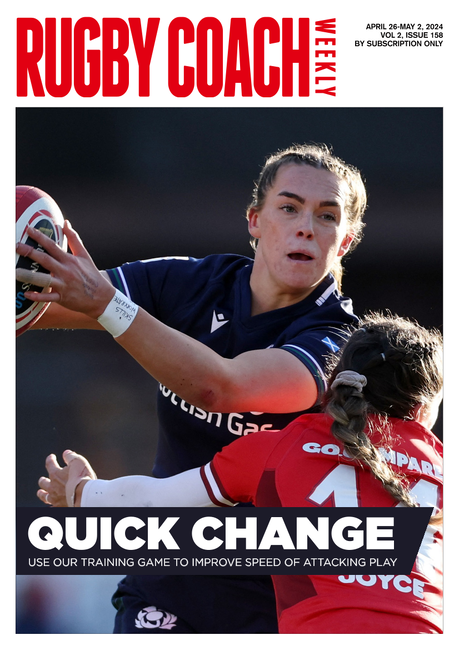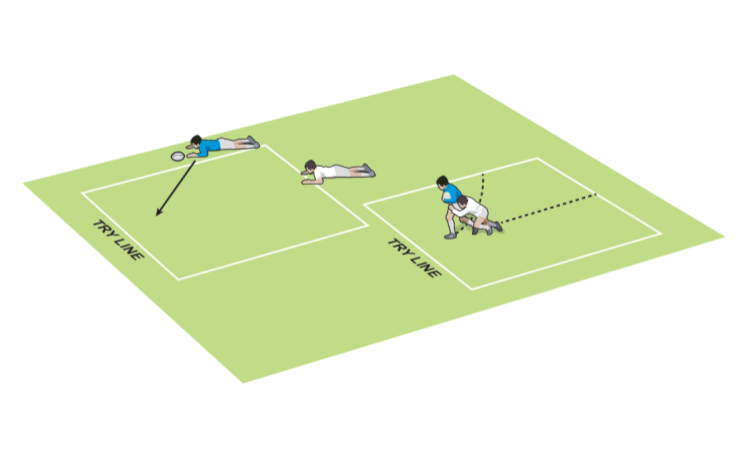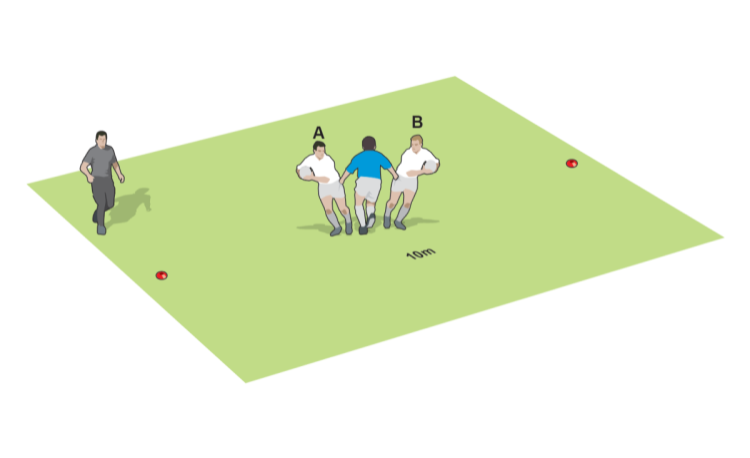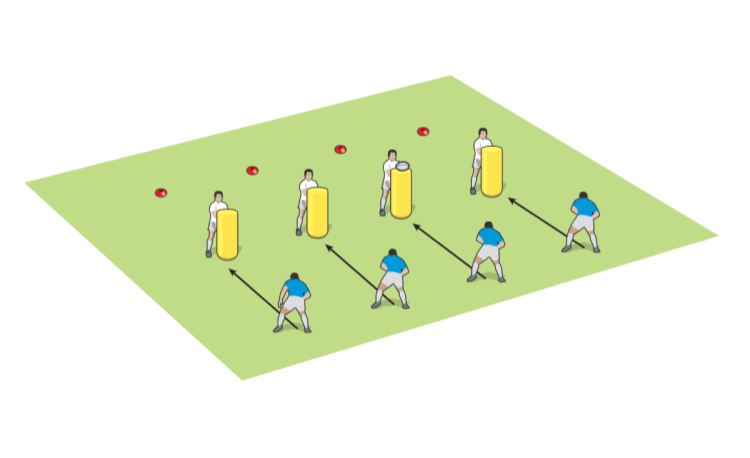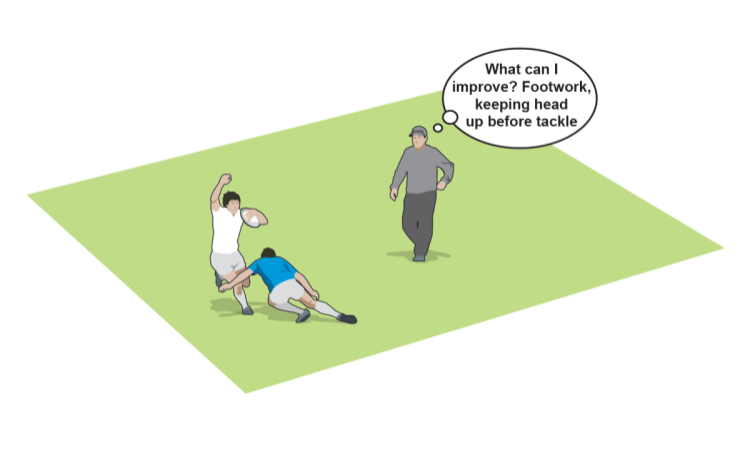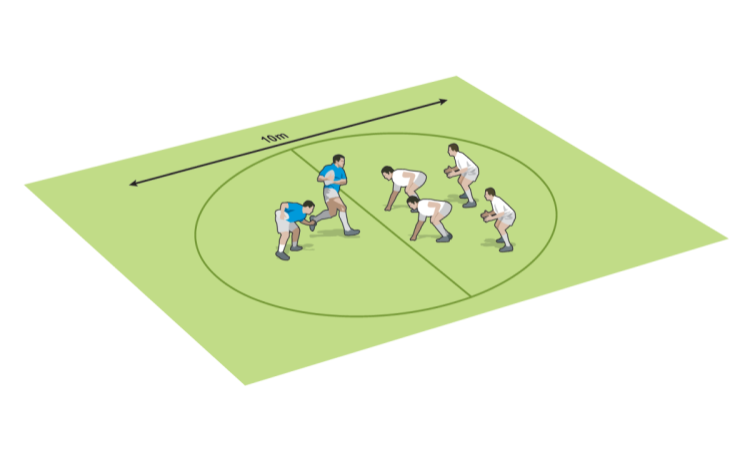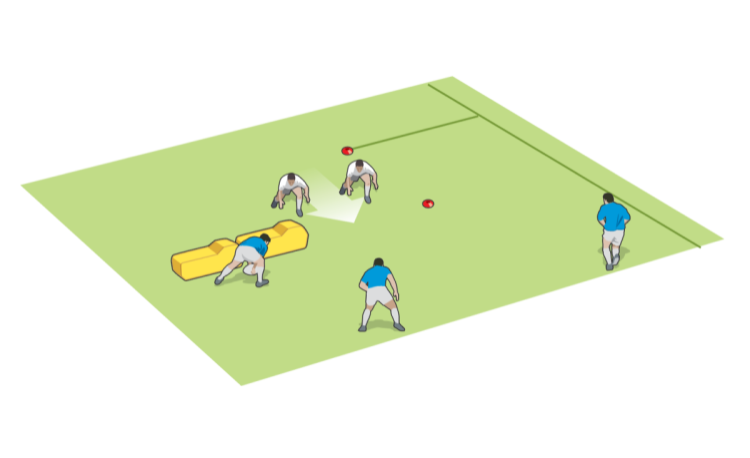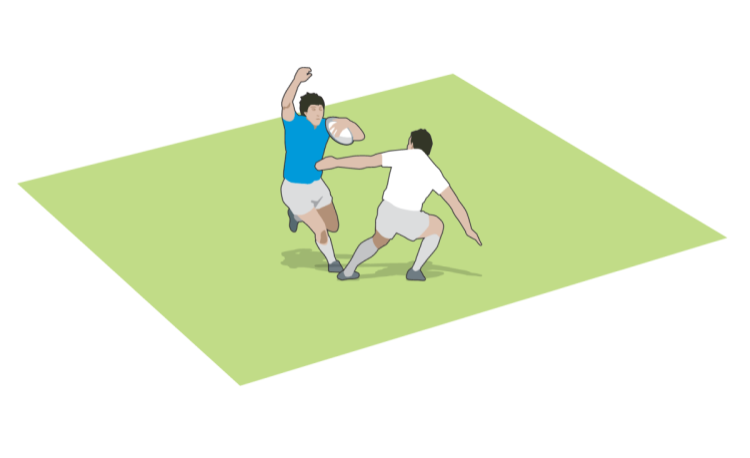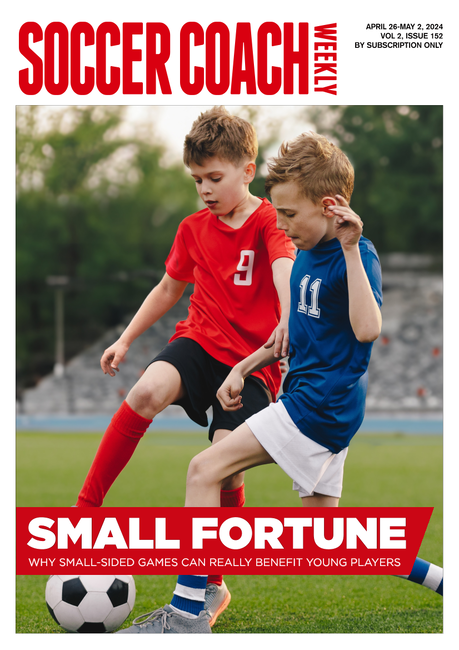You are viewing
1 of your 2 free articles
High pressure tackling reactions
Get your players used to making side-on or front-on tackles with this high-octane exercise. The tempo will keep the players moving quickly into position and making choices on which tackle to employ.
ACTIVITY
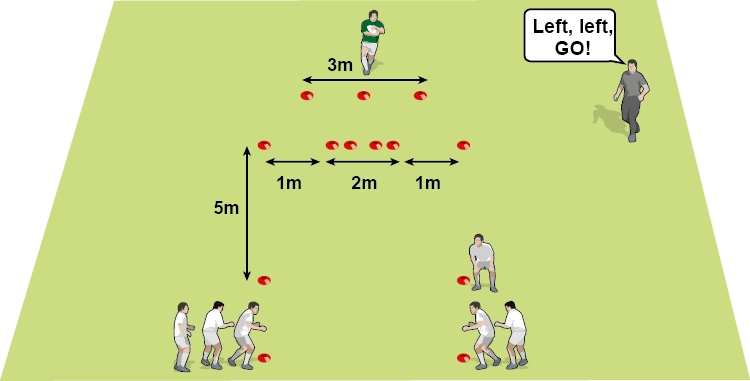
- Put a line of attackers at one end of the training area.
- One defender stands on the try line with their back to the ball carrier. Other defenders line up ready to come in.

- Shout out to the front attacker which gates/gaps to run through. They run through those gates, aiming to get to the try line. In the meantime, the defender turns and comes forward to make a tackle.
- You can start by having the defender make a shoulder and arms contact only then progress to a full tackle.

- Once the tackle is completed (or missed), the next attacker and defender get into place.
- Keep the activity quick with lots of goes for all the players in a short space of time.
DEVELOPMENT
- Get another attacker to support the ball carrier but come through the other gates/gaps.
- OR Have another defender at the other corner, to make it a 1v2.
NOTES
Run this through rapidly. Give feedback as the defender gets up, or at the very end. The defender who has just been involved joins the back of the attacking group, while the attacker joins the end of the defending group.
TECHNIQUE
- The defender should always move forward, not get planted.
- The defender aims to get their foot close to the ball carrier.
- The attacker should always be moving forward.
Related Files
Newsletter Sign Up
Coaches Testimonials

Gerald Kearney, Downtown Las Vegas Soccer Club

Paul Butler, Florida, USA

Rick Shields, Springboro, USA

Tony Green, Pierrefonds Titans, Quebec, Canada
Subscribe Today
Be a more effective, more successful rugby coach
In a recent survey 89% of subscribers said Rugby Coach Weekly makes them more confident, 91% said Rugby Coach Weekly makes them a more effective coach and 93% said Rugby Coach Weekly makes them more inspired.
Get Weekly Inspiration
All the latest techniques and approaches
Rugby Coach Weekly offers proven and easy to use rugby drills, coaching sessions, practice plans, small-sided games, warm-ups, training tips and advice.
We've been at the cutting edge of rugby coaching since we launched in 2005, creating resources for the grassroots youth coach, following best practice from around the world and insights from the professional game.


